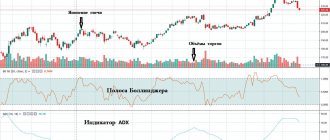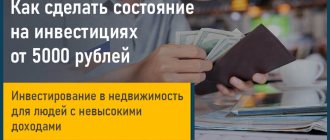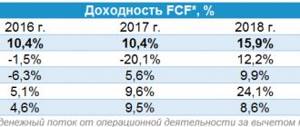Every day we are faced with some rules. These are traffic rules, spelling rules, game rules, and so on. These rules were invented so that by following them you can achieve the desired result and avoid sad consequences.
In investments, there are essentially no rules that would be clearly stated in any code. Therefore, many beginners often learn them empirically from their own mistakes, which is not good and usually ends in financial losses.
In 2007, Ivan Ivanovich saw a bright advertisement for one of the mutual funds. The advertisement said that over the past year the fund earned 157% per annum. Having become interested, Ivan Ivanovich went to the management company. There he was shown a beautiful graph of the growth of the fund's value, described rosy prospects, and was told that the stock market was now growing very strongly, and that the MICEX index would soon exceed 2,500 points. Flattered by beautiful charts, high profitability and analysts’ forecasts, Ivan Ivanovich withdrew all his savings from the deposit and invested them in this fund.
But something went wrong... After a few months, the value of the fund began to fall. First by 10%, then by 20%, then by another 30%. When the value of the account dropped by half, Ivan Ivanovich could not stand it and sold everything at a loss. “Screw this stock market, I’d better put it all back on deposit,” he thought with resentment and anger.
In fact, Ivan Ivanovich made several of the most serious and common mistakes that beginners make: he invested all his money in one instrument, did not assess the risks, did not determine the goals and timing of investment, did not leave at least a little savings on deposit, and so on.
Nevertheless, there are several basic rules of investing, following which you will most likely be able to avoid the mistakes that Ivan Ivanovich made and achieve success in investing.
Rule #1. Decide on your goals and create a personal financial plan
If you don't know where to go, you won't get anywhere - this phrase best describes why you need to figure out your financial goals first. Before you start investing, you must decide for what purpose you will invest. These can be completely different goals: saving for retirement, buying real estate, education for children, buying a car, traveling, and so on. Any goals you want to achieve that require money.
How to set goals correctly?
You can say - I want a house. But this is not the goal yet. After all, it is completely unclear what kind of house it is, has it already been built, ready and for sale or is it yet to be built, what location it is located in, how much money is required, when you want to start living in it, and so on. The goal must be clear and precise; at a minimum, three things must be determined:
- make a detailed description of the goal
- determine the cost of the goal
- determine the desired time frame for its achievement.
For example, a goal may sound like this: a brick two-story house in the village of Zarya, worth 7,000,000 rubles in 5 years.
It’s a little more difficult if the goal is passive income. Let's say you decide that your desired passive income per month is 100,000 rubles. Of course, passive income does not fall from the sky on its own; you need assets that will generate it. For stable income, assets must be placed in reliable financial instruments with fixed income. Now such instruments bring about 6-8%. 100,000 rubles per month is 1,200,000 per year. To receive such an amount in the form of interest, the amount of capital must be 15-20 million.
In fact, in reality the capital should be even greater, since if you plan to receive income for many years, then due to inflation its purchasing power will decrease, and next year you will no longer need 100,000 per month, but for example , 106,000. Therefore, some part of the capital should be placed in financial instruments that are capable of generating high income, for example, shares, so that the purchasing power of capital does not fall.
Speaking of inflation. If achieving a goal is greatly delayed, then in the future, due to inflation, its cost may increase significantly. Therefore, when planning financial goals, you need to calculate the future value of the goal. You can read how to do this in the article Time Value of Money.
How to achieve financial goals?
To achieve financial goals, a personal financial plan is developed.
Once you have decided on your goals, you should have a list of them, indicating the cost and deadline for each goal. If there are many goals, then it is not a fact that you will be able to achieve them all. Therefore, goals need to be prioritized and the most important ones given priority. What's next? You need to decide how to achieve these goals. This is exactly why a personal financial plan is drawn up. Investing without a financial plan is like going into the woods without a map or compass.
There are always a lot of questions. How to accumulate the required amount, how much to save, where to invest money, what investment strategy to choose, what financial instruments to use, what investment method is better to choose, what to do if the goal is unattainable within the desired period, and so on. A financial plan answers all these questions.
In order to draw up a plan, you need initial data. The work begins with an analysis of the current financial situation, the value of assets and liabilities, income and expenses. This will help you take a broad look at the scope of your financial capabilities, find hidden financial reserves and discover vulnerabilities.
You will find out the amount of your capital, the amount of cash flow that will make up your investment potential and other things. This is something without which it is impossible to make a plan, and therefore achieve goals.
For example, you may suddenly find that a significant portion of your money is being wasted, which you previously did not notice until you started keeping track of your income and expenses. Or that a garage that you haven’t used for a long time can be sold or rented out, generating additional income.
By doing this work, you will lay the foundation on which the house of your financial future will be built.
Rule No. 6: Assess how long the laws and legislative framework have been in place in the country
Assess how often it changes or has changed over the past 100, 200 years or more. It is better to trust your wealth and savings to those countries in which the norm is stable laws for decades and at the same time they do not fundamentally change.
Example: English law, which has been in effect for over 300 years; American laws that have been in effect for over 200 years. This is important because we are talking about long-term investments for a period of 15, 20, 30, 40 years or more.
This must be taken into account so that you can create capital according to your plan, not only for your future, but also for future generations.
By the way, the laws in such countries work equally for all people without exception.
Rule #2. Create a financial safety net
You cannot invest without having a personal reserve fund just in case. Every incident always arises unexpectedly and at the most inopportune moment, when you are not expecting it at all. This could be loss of a job, illness, expensive medical care, breakdown of expensive equipment that you cannot do without, large unforeseen expenses, and so on.
An investment portfolio cannot serve as a financial cushion. Its goal is to increase money, and its value can fall significantly. Most often, the need to get into a stash arises during a crisis. By using a portfolio as a reserve, you risk getting into a situation where you urgently need money just when the value of the portfolio decreases, and you will have to sell your assets at a loss.
Therefore, the financial cushion should be separated from other assets and used only for its intended purpose. The easiest way is to keep it on a bank deposit in a reliable bank.
Warren Buffett's Basic Rules of Investing
- You need to buy shares when their market value is significantly lower than the actual price. The best option is securities whose value does not exceed 2/3 of the net asset price (when recalculated per 1 share).
- Have patience. Value investors don't expect quick profits. Anyone who wants to get rich quickly is unlikely to get rich.
- You need to develop endurance and discipline. There is no need to panic by buying or selling assets at the slightest market fluctuations. You need to have your own opinion and base your decisions on logic.
- Choose companies whose activities you understand. By understanding key business processes, opportunities for optimizing them and obtaining maximum benefits from activities, the investor becomes one of the owners of the business, and not just a shareholder.
- Long-term prospects are more profitable than short-term ones . You need to choose shares of companies with an assessment of their activities for 4-5 years in advance. To choose securities that will generate income for a long time, give preference to companies whose products are in constant high demand; product prices are not regulated by the state. Firms that produce a unique, in-demand product can make a profit.
- When choosing a company to invest in, pay attention to the honesty and competence of its managers . If a manager is focused on increasing profits for shareholders and knows how to increase the value of the business, this is a big plus when choosing an investment property. You should not trust companies that confidently guarantee income, as well as those whose accounting is poorly organized or non-transparent.
- Diversification of risks allows you to make profits in the long term. If you're wondering where to start, create an investment portfolio of stocks of companies with different levels of profitability. This way you are more likely to earn income. You also need to understand that if out of ten companies in a diversified portfolio you make a profit from six of them, this is normal.
Rule #3. Invest for the long term
Most people are accustomed to thinking short-term and investing money for a year or two, no more. In fact, it is much more profitable to have a longer investment horizon and invest money for many years. Moreover, as the investment period increases, the benefit only grows.
Why is investing for the long term profitable? Because in the long term there is a compound interest effect , which is practically unnoticeable in the short term.
Compound interest is when profit in the form of interest is added to the principal amount of the deposit, and new interest is charged on this amount. The compound interest formula is as follows:
SUM = X * (1 + %)n
where X is the deposit amount, % is the interest rate in percent per annum, n is the number of interest periods, SUM is the final amount.
You may have encountered compound interest in the form of bank deposits with capitalization. Anyone who has been interested in this issue knows that at the same interest rate, a deposit with interest capitalization is better than without. Moreover, monthly capitalization is better than quarterly, since interest is accrued more often and the income is greater.
Simple and compound interest
Let's compare two examples: let's invest 100,000 rubles into two deposits with an interest rate of 10% per annum.
In the first case, compound interest will be charged, in the second - simple interest. After one year, both deposits will accumulate the same amount of 110,000 rubles, there is no difference. We extend the deposit for the next year, in the first case, interest in the form of 10,000 rubles is added to the deposit amount and interest is accrued not on 100,000, but on 110,000, and in the second case, interest is accrued on the same amount of 100,000.
In the second year, the amount of accrued interest on the first deposit will be 11,000, on the second 10,000. There is already a difference, but not very big.
In order not to waste time, let's fast forward 10 years. The first deposit will accumulate 259,374, and the interest accrued for the year will already amount to 23,579 rubles. On the second deposit the amount is 200,000, and interest is 10,000 rubles.
After 20 years, the amount of interest on the first deposit is 61,159 rubles, on the second deposit... it is still 10,000. The final difference in capital between the deposits by the year 20 will be 372,750 rubles.
Difference between simple and compound interest
As can be seen from the graph, as the investment period increased, the difference in capital between deposits only grew. If in the 5th year it was only 7%, then by the 20th year it had already amounted to as much as 124%. This is the effect that compound interest creates; the longer you invest, the faster your capital grows.
In addition, a long investment horizon allows you to include more stocks - something that is likely to bring you more income over the long term than anything else.
Real return on assets 1802-2013. Stocks - US shares, Bonds - US bonds, Bills - short-term bills, Gold - gold, Dollar - US dollar.
Rule #5: Avoid Speculation
Speculation is a very dangerous and dubious way of investing. More precisely, these are active investments; normally, they are suitable for the psychotype of only 1-2% of people. The probability of losing money is 99% and, moreover, you can lose it at any time. And in order to make money on speculation, you need to work a lot, you need to devote many hours to it every day and have the appropriate thinking model.
Speculation is a way of earning money, but not investing. This is an active way to make money. This also applies to business, to investments in Russian real estate. Remember who were called speculators in Soviet times? Right. Businessmen who bought and sold something quite often.
When you buy an apartment and resell it after 2-3 years, you are also engaged in active investments. There is a new trend, it is called PAMM accounts. This is trust management in Forex. By the way, in some developed countries this is considered pure fraud, for example, in the USA. Are you sure that PAMM accounts will work stably for 15-30 years and will be able to provide you with at least 10-15 years? Extremely unlikely.
I do not recommend such speculative methods, they are a big risk and they are not for everyone. These methods will not be able to provide you with stable, much less guaranteed, passive income for many decades.
Rule #4. Start investing as early as possible
Invest from a young age! This rule follows directly from the previous one. Most people don't think about saving at a young age, even though that's when they should be. The thought that it would be nice to save something for retirement usually comes to mind when retirement is just around the corner.
Let's imagine two friends: Semyon Semenych and Ivan Petrovich. Now they are 50 years old, that is, in 10 years they will retire. Semyon Semenych started thinking about savings 15 years ago, and began annually investing 100,000 rubles in an investment portfolio, whose average return was 15% per annum. Ivan Petrovich started thinking about retirement only now and also began saving 300,000 rubles annually into the same investment portfolio. By this time, Semyon Semenych had already accumulated 5.4 million rubles. After 10 years, Ivan Petrovich will have accumulated a capital equal to 7 million rubles. On the account of Semyon Semenych, provided that at the age of 50 he stops replenishing his portfolio, and simply leaves the money in the account for further growth, 22 million will accumulate. The difference is 3 times! And this despite the fact that Ivan Petrovich invested twice as much money in his portfolio.
Even if you don’t currently have a large amount of money to invest, you can start with small amounts that everyone can afford. Just 1000 rubles a month with regular investment can turn into millions in a few years.
Don't put off until later what you can do now. The earlier you start investing, the more capital you will accumulate.
Rule No. 3: Avoid returns of 20% per annum or more
The first sign that the business “smells bad” is when they promise you high profitability and in every possible way try to lure you into a dubious project. And when in this case we are also talking about guarantees - run!
If you still don’t have time to “escape” right away, remember three rules:
- The maximum guaranteed return is usually 3-4% per annum in foreign currency - this is the norm. But in rubles and in Russia nothing can be guaranteed!
- Only Warren Buffett showed the most stable return of 20.5% per annum. Over 50 years, the average annual return on his investments was 20.5%! This is a world record. This is the exception, but not the rule. No one in the world could do more over such a long period of time. Therefore, anything above 20% per annum SHOULD cause you strong doubts and the only reaction: “No, thank you, I don’t play such games, the risk is too high.” Unless, of course, you want to lose money forever...
- High returns can only be obtained in active speculative investments, i.e. in trading at short-term distances 1-2-3, maximum 5 years. Moreover, everything can be lost at any time, at any minute of the day or night. Do you need that kind of risk and stress? A business can also normally provide the same return, because it is a very aggressive active investment. Naturally, there are no guarantees here. Remember Nokia. There was and no...
Rule #5. Invest regularly
The secret of wealth is not to earn a lot at once. Wealth is created through persistence and time. You need to develop the habit of investing a certain amount of money regularly .
Time and compound interest will do the rest. Just 1000 rubles a month turns into 3.2 million in 25 years. In addition to the accumulation effect itself, regular investing creates a cost averaging effect. Regularly investing the same amount helps to purchase fewer shares at high prices and more at low prices. In this way, the negative effect of market bubbles is smoothed out and additional benefits are obtained from market declines.
Trying to guess the best moment to buy and sell is often unsuccessful. Therefore, anyone who regularly invests can be sure that market bubbles will not bring him strong losses, and buying at the bottom will give additional growth to investments. Even the one who bought the notorious Gazprom at 360, if he averaged out, would have been in the black.
The chart below shows the monthly results of investing in the S&P500 during a bear market.
From December 1999 to December 2002, the index fell from 1469 to 879 points, a loss of 41.3%. If an investor invested $3,000 in an index fund and then invested $100 each month, by the end of the period he would have $4,604.53 in his account, which is 30.2% less than the amount invested. An investor who did not use averaging would have lost 41.3%.
Rule No. 11: There are 3 types of profitability in passive investments
This depends on the type of investment portfolios. Conservative - from 3 to 6% per annum, moderate - from 6 to 8% per annum, aggressive - from 9 to 12% per annum. This has been confirmed by history over the past almost 100 years.
No bank in the world gives or can give such high interest rates on deposits. If a bank gives 6-7% per annum in currencies (EUR, USD, GBP) on deposits, then this should alarm you. It is better to avoid such investments, they are usually unreliable.
Rule #6. Don't lose money
Rule number one: Never lose money. Rule number two: Never forget rule number one.
Warren Buffett
Many people, in search of a way to increase their money, are often led by beautiful advertisements of Forex, PAMM, binary options, dubious remote control, financial pyramids and other companies that offer high returns “easily, quickly and with almost no risk.”
Very often such investments end in the loss of all or almost all money. This also includes those cases when an investor, due to inexperience, having listened to a broker’s advice, begins to speculate with high leverage on the stock market and quickly loses his money.
Unfortunately, losing money is very easy, but getting it back is much more difficult . The table below shows how much you need to earn to return to the lost amount after a loss.
For example, if you received a small loss of -5%, then to return to the previous amount, it is enough to earn 5.3%. If you have a loss of 50%, you will have to double the amount. And if you lose 90%, in order to recoup all losses, you need to earn all 900%!
The greater the losses, the more difficult it is to recover them. To avoid financial losses, follow these rules:
- improve your financial literacy,
- invest only in what you understand
- if you do not understand, contact a financial advisor for advice,
- choose proven and reliable investment methods that are regulated by laws and have investor protection,
- Avoid too tempting offers, free cheese only comes in a mousetrap
- be sure to use rule number 7
Books for investing
If you don't know where to start, read books and advice from successful investors. Books written by successful people who have earned millions on stock and financial exchanges will help improve the literacy of both novice and experienced investors. They talk about their secrets and strategies, share their experiences of mistakes and victories.
Best books:
- "The Intelligent Investor" by Benjamin Gray. The first edition dates back to 1949. and it was thanks to the principles outlined in this book that Warren Buffett made his billions.
- "Warren Buffett. The best investor in the world." In this book, Alice Schroeder describes the biography of the most famous and successful investor, his ups and downs, and invaluable experience.
- "Rich Dad's Guide to Investing." An American with Japanese roots, Robert Kiyosaki, gives detailed and engaging advice to novice investors. A bestseller that became a sequel to the book “Rich Dad Poor Dad.”
- "Zone trading". A publication that does not teach the basics and subtleties of trading, but allows you to form the correct mindset of a successful trader and get psychological preparation for playing on the stock exchange.
- "Warren Buffett's Rules for Investing." Jeremy Miller collected in this book letters from investors to his partners. They provide an opportunity to understand the train of thought and philosophy of this successful person.
- "Herbert N. Casson's 12 Rules of Investing." An autobiographical publication based on the author's twenty years of experience in successfully earning large capital on the stock exchange.
- "Alchemy of Finance." Stock market player George Soros, who became a billionaire, describes in his book his own investment experience and the theory of reflexivity, which predicts the dynamics of movement and trends of stock markets in different periods.
If you are interested in the right investment of a small amount , because... If you are just starting to play on the stock exchange, first read the advice of experienced traders. There are many trainings and books that will help you go from zero to first profit. In the process of obtaining useful information, try to apply it in practice.
You can also contact me for advice on issues that interest you. Over time, you will be able to develop your own strategy and tactics, form your own investment portfolio and earn large capital.
Rule #7. Diversify your investments
Don't put all your eggs in one basket is one of the fundamental rules of investing. There is a well-known case in the United States when an employee of one of the largest and most successful companies in the country, Enron, invested all her retirement savings in its shares, believing that nothing could happen to such a large company. Unfortunately, it turned out that Enron had manipulated its books and its shares became worthless. And the woman lost not only her job, but also her savings.
YUKOS
The Russian stock market is also familiar with similar stories. In 2004, one of the largest oil companies in Russia, Yukos, went bankrupt.
What do stories like this teach us? As much as you might want to invest your money in one company's stock or one asset, don't. Your investment portfolio should be properly diversified. Proper diversification means that your portfolio funds should be distributed among different assets and securities.
The portfolio includes different asset classes (stocks, bonds, precious metals, real estate, etc.). Each asset class, in turn, can also be diversified, for example by country (stocks of the USA, Russia, UK, Germany) and sectors (oil, financial, energy).
There should be enough securities so that a strong fall in one of them does not greatly affect the value of the entire portfolio. The easiest way to diversify your portfolio is with the help of index mutual funds or ETFs, which contain securities from the index and repeat its structure. By purchasing shares of such a fund, you immediately receive a basket of several dozen or even hundreds of securities. You can also select papers for your portfolio yourself, if your knowledge allows.
Example of a diversified portfolio
You can read more about portfolio diversification in the article Asset classes and diversification.
By the way, the cost averaging strategy can also be called time diversification. Because investing money does not happen at one moment, which may turn out to be unsuccessful, but at regular intervals.
Warren Buffett's Principles
Warren Buffett is an American billionaire who made his fortune through successful investments. He is considered one of the most successful investors in history, using his own investment rules when investing capital.
When forming an investment portfolio and searching for profitable assets, Buffett methodically analyzes companies according to the following parameters:
- simplicity and clarity of business;
- stability and reputation of the company;
- availability of development prospects;
- competence and honesty of top managers;
- rational distribution of profits;
- providing shareholders with transparent information about the state of the business and profitability;
- profitability of activities;
- profit margin;
- the ratio of the increase in the market value of the business to the increase in retained earnings;
- the price of shares is overestimated or underestimated compared to its real value.
That is, Buffett analyzes the market value of the business and the company’s securities at the last stages, having previously analyzed all aspects of the business that should be understandable and beneficial to him as an investor.
Various methods for assessing the effectiveness of commercial activities are used. If open even data is available, an analysis of financial stability and the likelihood of bankruptcy can be made.
Successful investors recommend necessarily studying news content, based on the analysis of which you can find undervalued shares (securities whose market value is lower than their nominal value).
Rule No. 8. Reduce costs
Imagine that you invested 100,000 rubles in an index fund whose average return over 20 years was 15% per annum. In 20 years, 100,000 will turn into 1,423,177 rubles. Now imagine that you invested the same 100,000 rubles in the same index fund, but which charges an annual commission of 1%. In 20 years, 100,000 will turn into 1,175,784. Just 1% commission over 20 years ate up 21% of profits!
Therefore, one of the most important tasks of a long-term investor is to reduce their costs .
You don't need to go far for an example. Let's take the U.S. Opening Fund, which invests in the American ETF iShares S&P 100 ETF. The costs of the mutual fund are: management fee 1.9%, depositary fee 1.5%, other expenses 0.5%. In total, a mutual fund can charge up to 3.9% annually. And this does not take into account surcharges and discounts.
As for the iShares S&P 100 ETF itself, it charges a commission of only 0.2%. Such a difference cannot but affect the dynamics of funds. Since 2013, the Otkritie mutual fund has lagged behind the ETF by 20%.
When trading independently through a broker, commissions also play a role and can vary greatly between different brokers. In addition to the “classic” trading commission for a transaction, a broker may charge a fee for maintaining a securities account, a fixed subscription fee, for a trading terminal, for submitting bonds to an offer, and so on.
Take some risks
Whether you are indifferent to the stock market or watch its fluctuations and panic every time, investing in stocks is the only way to increase your wealth. Bonds are safer than stocks, but low risk comes with low returns, especially given today's low interest rates.
Here, too, a lot depends on your age. In your younger years, you can afford to take relatively more risks.
One good guideline is the Rule of 110: You subtract your age from 110 to get your ideal portfolio allocation of stocks and bonds. For example, if you are 30 years old, you invest 80% in stocks and 20% in bonds.
Rule #9: Take advantage of tax breaks
The only thing worse than commissions are taxes. They take away 13% of your profits. If you earned 20%, after taxes, it turns into 17.5%. There are several ways for an investor to avoid taxation through tax benefits.
Individual investment account
Since 2015, every citizen of the Russian Federation can open an individual investment account - an account with preferential tax treatment. An IIS can be opened with a broker or management company. You can use it to purchase securities traded on Russian exchanges, currency, shares of mutual funds, or give money to trust management. The minimum investment period for an IIS is 3 years; in 1 year you can deposit no more than 400,000 rubles. There is no possibility to withdraw money from an IIS without terminating the contract.
There are two types of IIS - with a deduction for contributions and for income. The first type allows you to return the personal income tax paid by the taxpayer in the amount of 13% of the amount deposited into the IIS for the year. Thus, with a ceiling of 400 tr. the maximum deduction amount will be 52 tr. (but not more than the paid personal income tax amount). The second type allows you not to pay income tax when closing an IIS. In most cases, with a short investment period, a deduction for contributions is beneficial. But as the period increases, income deduction becomes more preferable.
Long-term ownership of securities
You can also avoid paying income tax if you hold securities for more than three years. This is called the tax benefit for long-term holding of securities. The benefit is valid for securities traded on an organized market and for shares of open mutual funds acquired after January 1, 2014. Having held securities for more than three years, the investor receives the right to a tax deduction in the amount of income received, that is, his income from the sale or redemption of securities is exempt from taxes.
A maximum amount has been established for the deduction, which is calculated using the formula N x 3 million rubles, where N is the number of full years of ownership of the paper. This benefit does not apply to securities purchased through an individual investment account.
Balancing losses
The investor has the right to offset losses from previous years with profits and return taxes. For example, if you made a profit over the last year, and a loss last year, then you can balance the loss of previous years with the profit, thereby reducing your tax base, and receive a tax deduction.
For example, in 2014 you received a loss of 500,000 rubles, and in 2015 a profit of 300,000 rubles. Your tax for 2015 was 39,000 rubles. You can return it in full, since the loss for 2014 fully covers the profit for 2015. The remaining 200,000 rubles of the unbalanced loss can be transferred to the profit of future periods.
To receive a deduction, you will need to request a 2-NDFL certificate from the broker for the profitable year and a certificate of losses. Next, you need to generate and submit a 3-NDFL declaration to the tax office along with documents and an application for deduction.
Other tax deductions
In addition to investment deductions, there are others that should not be forgotten:
- A standard tax deduction that can be received by citizens of the Russian Federation with a certain status (disabled people, blockade survivors) and parents with children.
- Property deduction for the purchase or construction of housing.
- Social deductions for education, treatment, charity, and expenses for creating a pension.
- Professional deductions to which individual entrepreneurs, lawyers and notaries are entitled.
Investing Unit-Linked
Unit-Linked is a method of overseas investment that takes the form of an insurance policy. This makes it possible not to declare your income annually, but to pay tax only after the policy is closed. In addition, the legislation provides for a preferential tax regime: tax is levied not on all profits, but only on income received in excess of the refinancing rate that was in effect during the policy period.
Typical investor mistakes
Three main mistakes of a new investor:
- Act at random. Listen to the advice of strangers, relatives, acquaintances, and recommendations on the Internet. That is, simply believing someone else’s opinion, without analyzing the situation and drawing your own conclusions. Yes, maybe the advice is effective, not bad. But you need your own experience! So let's act smart.
- Give in to emotions. Excessive enthusiasm, excitement, euphoria from the first success are just as harmful as self-doubt, fear of losing money and excessive doubts. Find a balance, be a cool-headed investor who does not give in to emotional impulses.
- Hurry up. Take your time! We repeat ourselves, but no one is really pushing you. We understand that you want to make a profit as soon as possible, but you need to first plan everything, then monitor the situation, weigh the risks, and then make a decision. Otherwise, you can make the wrong choice of a financial instrument and investment object, and misjudge the situation.
Existing Features
Investment functions will differ significantly at the micro and macroeconomic levels. If we consider this issue from the perspective of an individual person, then it all comes down to the phrase “Money must work.” In this case, funds are invested in production (securities, currency, etc.) to make a profit.
However, if we rise to the level of a company or state, we can identify the following investment functions:
- regulatory;
- stimulating;
- distribution;
- indicative.
The regulatory function is to ensure the continuity of capital reproduction. It is also focused on adjusting ongoing production processes.
The stimulating function is aimed at accelerating the pace of development of a specific area of activity or economic sector. It is precisely this that is capable of ensuring stable economic growth.
The distribution function consists of redistributing the existing monetary resource. With its help, you can stimulate the development of lagging industries or areas of activity.
The indicative function is aimed at monitoring the correct direction of movement towards the set goal. It allows you to monitor and promptly correct all distortions and shortcomings of the existing economic system.
ICO
Many people think about the rules for successful investing in ICOs, and for good reason. Let us remember that we are talking about cryptocurrency. At the moment, there are many exchanges on which you can make money, but there are very high risks there. Cryptocurrency is a separate area of investment, which stands very separately due to its specification. To make a profit and understand this topic, you will have to learn from the masters of this business, since it is very difficult to master all the nuances yourself.
ICO is a model for attracting funds to new cryptocurrency projects. Investments are possible in Ethereum and Bitcoin coins. When the acceptance of investments ends, the organizers divide a certain part of the cryptocurrency between the participants. The first such project was in 2013, and it was called Mastercoin.
Where to get funds for investment
Very important question! Yes, often you need a very small amount to invest. You can start with 1 thousand rubles. But it’s still better to stock up on capital. How to do it? Save up! This is the best way to remain independent, avoid getting into debt and provide a safety net.
Let's divide all your income into three parts:
- Necessary expenses. Groceries, utility bills, a tutor for a child, clothes... Daily expenses, without which you simply cannot live.
- 10% for creating a reserve. Yes, we recommend saving at least 10% of all family income every month. This way you can quickly create a financial reserve for a rainy day.
- Available funds. Everything that remains after everyday expenses and creating a reserve. These are the funds that can and should be invested.











